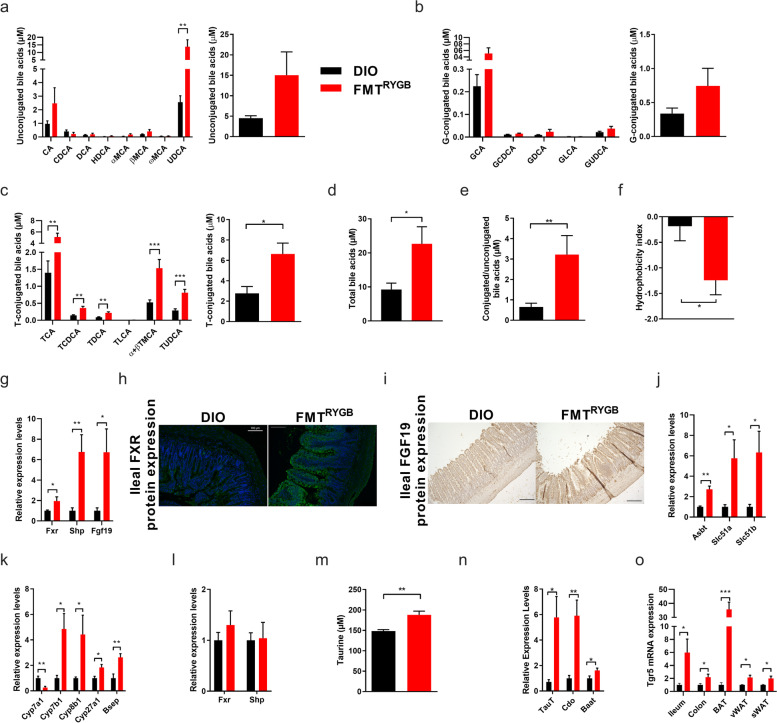Fig. 5.
RYGB microbiota transfer modulates intestinal BA receptor signaling and promotes intestinal health in HFD-induced obesity. a–e Concentrations of unconjugated BA (UBA) species (in μM) (a), glycine (G)- (b) and taurine (T)-conjugated BA (CBA) species (in μM) (c), and of total bile acids in plasma (in μM) (d), ratio of total CBA to UBA (e) and hydrophobicity index (f) in plasma from portal vein collected at 5 weeks after fecal microbiota transfer (FMT) from RYGB-operated rats (FMTRYGB) compared to their respective controls (DIO rats not receiving RYGB microbiota). g–j Relative mRNA expression of FXR target genes in ileum (g), representative immunofluorescent FXR-stained ileal sections (scale bars 100 μm) (h) and immunohistochemistry FGF19-stained ileal sections (scale bars 200 μm) (i), and relative mRNA expression of target genes involved in BA transport in the ileum (j) of FMTRYGB and DIO animals. k, l Hepatic mRNA expression of genes involved in BA metabolism (k) and FXR target genes (l). m–o Plasma free taurine concentrations (m) and relative mRNA expression of hepatic target genes involved in taurine metabolism (n). Relative mRNA expression (normalized to DIO) of Tgr5 in ileum and additional organs (o). Data are mean ± s.e.m; n = 6–10 animals per group with pooled data from 3 independent experiments. *P < 0.05, **P < 0.01, ***P < 0.001; unpaired two-tailed Student’s t test

